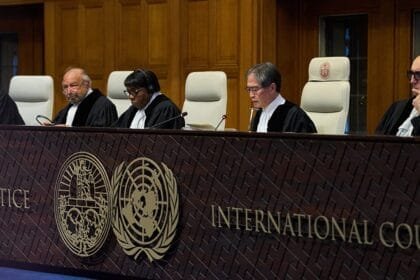WASHINGTON, United States – In a historic shift that is reshaping the global financial system, the world’s central banks’ gold reserves have exceeded their holdings of U.S. Treasury securities for the first time since 1996, according to a report by the World Bank Group.
This move represents more than just a financial development, but rather a strategic signal of growing international concern about the stability of the dollar and the US economy.
According to recent data, central banks’ gold reserves amounted to approximately $4 trillion, while US debt instruments were estimated at $3.8 trillion.
This shift reflects a profound restructuring of international reserve management and a gradual decline in reliance on the dollar as the dominant reserve currency.
◾ From Dollar to Gold: Breaking a Decade-Old Dominance
Since the collapse of the Bretton Woods system in the early 1970s, the US dollar has been established as the primary international reserve instrument, supported by rising interest rates in the 1980s.
The emergence of the petrodollar system, in addition to the depth of US markets and the ease of trading their bonds.
But global events since 2022—from geopolitical tensions, to economic sanctions, to the US debt crisis—have prompted central banks around the world to turn to gold as a safe haven.
In 2022 alone, central banks recorded record purchases of 1,136 tons of gold, a clear sign of declining confidence in US bonds.
This trend continued strongly in the following years (2023, 2024, and 2025), resulting in gold reserves surpassing their counterparts in US bonds for the first time in more than a quarter century.
◾ New map of global reserves
The United States itself tops the list of countries owning gold, with reserves of 8,133.5 tons, estimated to be worth more than $1.11 trillion, followed by Germany (3,351.5 tons), then Italy and France.
It’s noteworthy that China and Russia have entered this race strongly, with each holding reserves exceeding 2,200 tons. This comes in the context of a clear gradual decoupling from the US dollar.
Other countries, such as India, Turkey, and Saudi Arabia, have also emerged as major buyers. This reflects the expanding global shift, not only among major powers but also among emerging economies.
◾ Fears of America’s debt… and the dollar as a weapon
This shift coincides with the US public debt rising to unprecedented levels. In addition, Washington’s use of the dollar and economic sanctions as political pressure tools has expanded.
This has prompted several countries to reevaluate their relationship with the US currency and seek physical assets independent of governments.
In this context, gold has become a preferred choice, as it is an asset that does not follow any sovereign obligation. It is also not directly affected by political or market fluctuations, and is not subject to bankruptcy or confiscation.
◾ 20% of the world’s gold is held by central banks.
It is estimated that approximately one-fifth of all gold mined throughout history is now held by central banks. This unprecedented proportion reflects the extent to which the yellow metal has regained its status as a strategic element in monetary policy.
Reading into the global financial future
Gold’s overtaking of US Treasury bonds is not merely a technical move in the markets. It is widely viewed as a reshaping of the international financial balance of power.
As the dollar-based system falters under the strain of debt, political tensions, and economic crises, gold is once again playing the role of the final arbiter of confidence and financial stability.
Post-dollar era?
This shift suggests that the world may be on the cusp of a “post-dollar” era, with central banks diversifying their reserve baskets and returning to gold as a benchmark for value, independent of government liabilities.
In a world where doubts are growing about the sustainability of the existing financial system, gold appears to be regaining its luster with force.

















